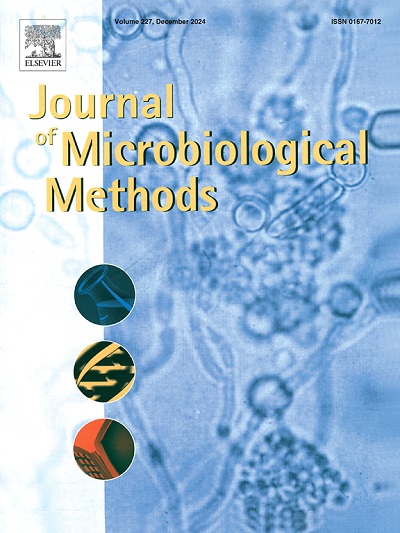Laser Speckle Image analysis for identifying the minimum lethal concentration of ampicillin in Escherichia coli liquid cultures
IF 1.9
4区 生物学
Q4 BIOCHEMICAL RESEARCH METHODS
引用次数: 0
Abstract
Understanding a pathogen's sensitivity to antimicrobial drugs through Minimum Lethal Concentration (MLC) is crucial for effective treatment planning for bactericidal drugs. In this paper, we propose a novel approach using Laser Speckle Imaging (LSI) to determine the MLC of Escherichia coli (E. coli), a common pathogenic bacterial species. LSI enables the capture and analysis of the dynamic changes in speckle patterns caused by alterations in optical scattering and shape alterations of bacterial cells as a response to antibiotic treatments through a label-free approach. The observed speckle pattern changes are correlated with the gold standard method to determine the MLC, representing the lowest concentration at which E. coli is lethally affected. The results demonstrate the potential of LSI as a reliable and rapid method for determining the MLC of E. coli. This method has much potential for antimicrobial research since it provides a quick, non-destructive evaluation of bacterial responses to various bactericidal antibiotic doses without requiring labor-intensive processes like pour plate tests to calculate the MLC.
激光斑点图像分析,用于确定大肠杆菌液体培养物中氨苄青霉素的最小致死浓度。
通过最低致死浓度(MLC)了解病原体对抗菌药物的敏感性,对于制定有效的杀菌药物治疗计划至关重要。在本文中,我们提出了一种利用激光斑点成像(LSI)测定常见致病细菌大肠杆菌(E. coli)最低致死浓度的新方法。通过无标记方法,激光斑点成像技术可以捕捉和分析斑点模式的动态变化,这些变化是由细菌细胞的光学散射和形状变化引起的,是对抗生素治疗的反应。观察到的斑点模式变化与确定 MLC 的黄金标准方法相关联,MLC 代表大肠杆菌受到致命影响的最低浓度。结果表明,LSI 是一种可靠、快速的大肠杆菌 MLC 测定方法。这种方法可快速、无损地评估细菌对各种杀菌抗生素剂量的反应,而不需要像倒平板试验那样的劳动密集型过程来计算 MLC,因此在抗菌研究方面具有很大的潜力。
本文章由计算机程序翻译,如有差异,请以英文原文为准。
求助全文
约1分钟内获得全文
求助全文
来源期刊

Journal of microbiological methods
生物-生化研究方法
CiteScore
4.30
自引率
4.50%
发文量
151
审稿时长
29 days
期刊介绍:
The Journal of Microbiological Methods publishes scholarly and original articles, notes and review articles. These articles must include novel and/or state-of-the-art methods, or significant improvements to existing methods. Novel and innovative applications of current methods that are validated and useful will also be published. JMM strives for scholarship, innovation and excellence. This demands scientific rigour, the best available methods and technologies, correctly replicated experiments/tests, the inclusion of proper controls, calibrations, and the correct statistical analysis. The presentation of the data must support the interpretation of the method/approach.
All aspects of microbiology are covered, except virology. These include agricultural microbiology, applied and environmental microbiology, bioassays, bioinformatics, biotechnology, biochemical microbiology, clinical microbiology, diagnostics, food monitoring and quality control microbiology, microbial genetics and genomics, geomicrobiology, microbiome methods regardless of habitat, high through-put sequencing methods and analysis, microbial pathogenesis and host responses, metabolomics, metagenomics, metaproteomics, microbial ecology and diversity, microbial physiology, microbial ultra-structure, microscopic and imaging methods, molecular microbiology, mycology, novel mathematical microbiology and modelling, parasitology, plant-microbe interactions, protein markers/profiles, proteomics, pyrosequencing, public health microbiology, radioisotopes applied to microbiology, robotics applied to microbiological methods,rumen microbiology, microbiological methods for space missions and extreme environments, sampling methods and samplers, soil and sediment microbiology, transcriptomics, veterinary microbiology, sero-diagnostics and typing/identification.
 求助内容:
求助内容: 应助结果提醒方式:
应助结果提醒方式:


